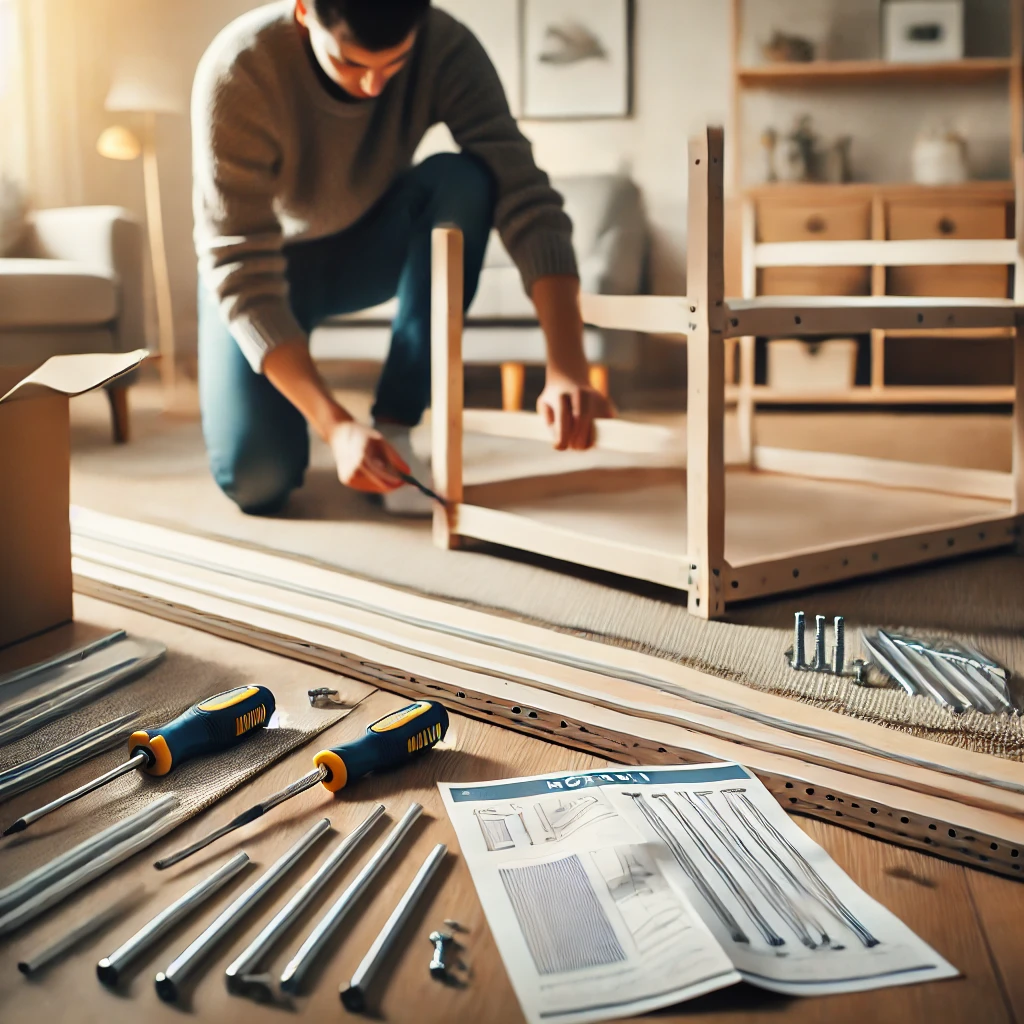If you’ve ever ordered a new piece of furniture online, you’ve likely experienced the joy of receiving it, followed by the frustration of putting it together. What may seem like a simple task can quickly become overwhelming, especially when faced with countless screws, ambiguous instructions, and parts that don’t seem to fit together. Furniture assembly can be a time-consuming and stressful process, particularly for those who don’t do it regularly.
While some people enjoy the challenge, many encounter common mistakes that turn the experience into a drawn-out headache. Fortunately, many of these issues can be avoided with a bit of planning and attention to detail. In this article, we’ll go over the most frequent furniture assembly mistakes and how to prevent them. Plus, we’ll explore how professional furniture assembly services can save you from stress and ensure your furniture is set up correctly and efficiently.
Mistake #1: Ignoring the Instruction Manual
One of the most common and significant mistakes people make when assembling furniture is skipping the instruction manual. It’s easy to assume that assembling a chair or table is intuitive. However, furniture pieces are often more complex than they appear, and missing a crucial step early on can lead to major problems down the line.
How to avoid it:
The instruction manual is your best friend during furniture assembly. Before you begin, take the time to read it through entirely. Understand the sequence of steps, identify which tools are needed, and note any tricky parts that might require extra attention. Follow the instructions methodically to ensure you don’t miss anything. Even if you feel confident, the manual is there to help you avoid small but costly mistakes.
Mistake #2: Using the Wrong Tools
Many people assume that all they need is a screwdriver or hammer to assemble any piece of furniture. However, using incorrect or poor-quality tools can lead to damaged parts or incomplete assembly. In some cases, manufacturers may provide specialized tools, and it’s essential to use them.
How to avoid it:
Ensure you have the right tools on hand before starting. Some common tools required for furniture assembly include screwdrivers (flathead and Phillips), Allen wrenches, and sometimes even drills. If the instructions specify certain tools, make sure to use them. If the package includes an Allen key or other specialized tool, use that instead of improvising with your own. Using improper tools may result in stripped screws, scratched surfaces, or even breakage of fragile components.
Mistake #3: Over-tightening or Under-tightening Screws
A delicate balance exists when it comes to tightening screws during furniture assembly. Over-tightening screws can damage the material, especially if you’re working with wood or particleboard. On the other hand, under-tightening screws can leave your furniture wobbly and unstable.
How to avoid it:
Follow the instructions on how tight the screws need to be. If you’re unsure, tighten them just enough to ensure the pieces hold together without exerting excessive force. If you find the screw stops moving smoothly, it’s time to stop. When in doubt, tighten the screws enough to keep the furniture stable, but check after use to make sure nothing is coming loose.
Mistake #4: Not Organizing Pieces Before Starting
Dumping all the parts out of the box and starting without organizing them first is a recipe for frustration. With so many similar-looking pieces, it’s easy to mix them up, leading to incorrect assembly or missing parts.
How to avoid it:
Before you begin, lay out all the parts and organize them. Check the instruction manual’s parts list and make sure you have everything before starting. Some manufacturers number or label each part, making it easier to identify what goes where. Taking just a few minutes to sort screws, bolts, and wooden pieces can save you hours of frustration later. Organization is key to speeding up the process and preventing errors.
Mistake #5: Attempting Complex Furniture Without Help
Assembling a simple chair or nightstand might be a one-person job, but when it comes to larger, more complex pieces like bed frames, wardrobes, or entertainment centers, doing it alone can be a mistake. Not only can it be physically exhausting, but you also risk damaging the furniture or injuring yourself.
How to avoid it:
For large or complicated pieces, it’s best to enlist help. Whether it’s a friend, family member, or a professional, having a second set of hands makes a world of difference. If you’re working on a particularly challenging item, like a wall-mounted unit or a bed with storage compartments, a helper can hold pieces steady while you secure them in place.
Why You Should Consider Hiring a Professional Furniture Assembly Service
Even with all the precautions, furniture assembly can still be a daunting task. It’s time-consuming, especially if you’re unfamiliar with the process, and mistakes can lead to frustration or even damaged furniture. This is where hiring a professional furniture assembly service comes into play.
Benefits of a Furniture Assembly Service:
- Saves Time: Professionals have experience assembling all types of furniture, which means they can do the job more efficiently than the average person.
- Avoid Mistakes: With a professional handling the assembly, you can rest easy knowing that the furniture is being assembled correctly, avoiding the common mistakes listed above.
- Proper Tools and Expertise: Professional assemblers come prepared with the right tools and know-how to handle any complications that arise, ensuring a smooth assembly process.
- Peace of Mind: Many furniture assembly services offer warranties or guarantees, meaning if something isn’t right, they’ll come back and fix it.
Hiring a professional furniture assembly service can also be a smart option if you’re furnishing an entire home or office, where the sheer volume of furniture to be assembled can be overwhelming. It’s a convenient solution for busy people who don’t have the time or energy to figure out detailed instructions and handle assembly.
Conclusion: A Smooth Assembly Process Saves Time and Stress
Assembling furniture doesn’t have to be a frustrating experience, but it does require patience and attention to detail. By avoiding these common mistakes—ignoring the manual, using the wrong tools, over-tightening screws, failing to organize pieces, and attempting difficult jobs alone—you can streamline the process and set up your furniture properly.
For those who prefer to skip the hassle altogether, professional furniture assembly services offer a stress-free alternative. Not only do they save time, but they also ensure that your furniture is assembled correctly, giving you the peace of mind to enjoy your new setup without the frustration.
Whether you tackle the task yourself or hire help, avoiding these pitfalls will make the process smoother and more efficient. After all, furniture assembly should end with you enjoying your new space, not nursing a headache from hours of unnecessary work!








